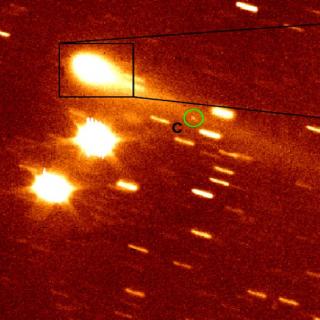Bibcode
de León, J.; Campins, H.; Morate, D.; De Prá, M.; Alí-Lagoa, V.; Licandro, J.; Rizos, J. L.; Pinilla-Alonso, N.; DellaGiustina, D. N.; Lauretta, D. S.; Popescu, M.; Lorenzi, V.
Bibliographical reference
Icarus, Volume 313, p. 25-37.
Advertised on:
10
2018
Journal
Citations
26
Refereed citations
25
Description
NASA's OSIRIS-REx and JAXA's Hayabusa2 sample-return missions are
currently on their way to encounter primitive near-Earth asteroids
(101955) Bennu and (162173) Ryugu, respectively. Spectral and dynamical
evidence indicates that these near-Earth asteroids originated in the
inner part of the main belt. There are several primitive collisional
families in this region, and both these asteroids are most likely to
have originated in the Polana-Eulalia family complex. We present the
expected spectral characteristics of both targets based on our studies
of four primitive collisional families in the inner belt:
Polana-Eulalia, Erigone, Sulamitis, and Clarissa. Observations were
obtained in the framework of our PRIMitive Asteroids Spectroscopic
Survey (PRIMASS). Our results are especially relevant to the planning
and interpretation of in situ images and spectra to be obtained by the
two spacecraft during the encounters with their targets.
Related projects

Small Bodies of the Solar System
This project studies the physical and compositional properties of the so-called minor bodies of the Solar System, that includes asteroids, icy objects, and comets. Of special interest are the trans-neptunian objects (TNOs), including those considered the most distant objects detected so far (Extreme-TNOs or ETNOs); the comets and the comet-asteroid
Julia de
León Cruz